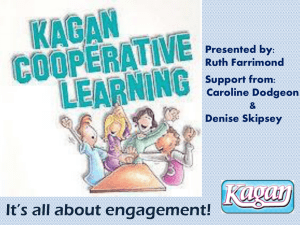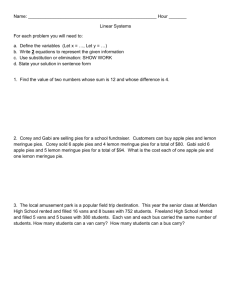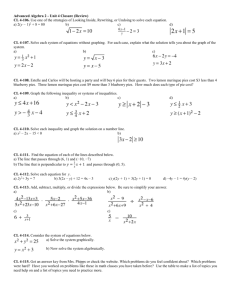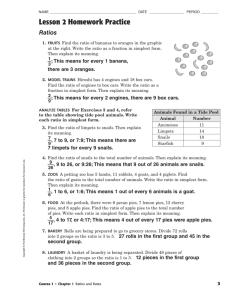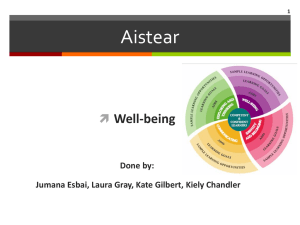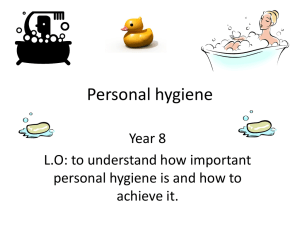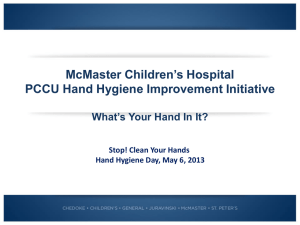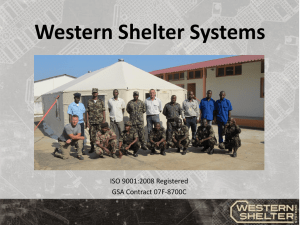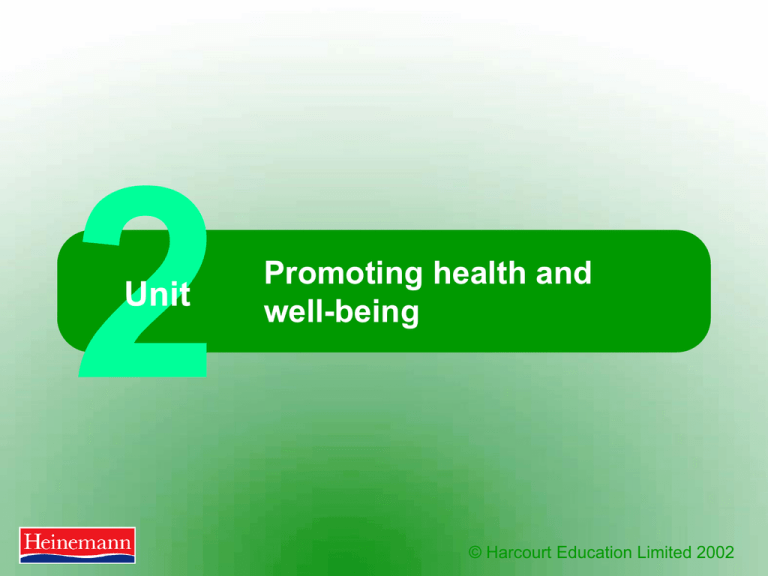
Unit
Promoting health and
well-being
© Harcourt Education Limited 2002
PIES
The four components of health
Physical health needs
Intellectual health needs
•
•
•
•
•
•
•
•
•
•
Active brain
Lifelong learning
Not being bored
Getting involved in
stimulating activities
• Feeling motivated
Feeling healthy
Sparkling eyes
Able to run for the bus
Plenty of energy
Body working well
Not having a headache
Good teeth
Good appetite
Feeling fit
Shiny hair
Emotional health needs
•
•
•
•
•
•
Not too much stress
Coping with life
Good relationships
Feeling happy and contented
Understanding ourselves
Understanding others
•
•
•
•
PIES
Social health needs
• Interested in activities with
others
• Having and maintaining
friendships
• Enjoying meeting people
• Getting on well with others
• Mixing with others
• Access to leisure facilities
PIES for babies
Physical
needs
Intellectual
needs
Emotional
needs
Social
needs
Warmth
Play
Bonding with carer
Develop routines
Shelter
Stimulation
Love
Meet people
Balanced diet
Toys
Encouragement
Play with others
Protection
Experiences
Laughter
Explore their
environment
Good hygiene
Picture books
Value
Sleep
Television
Exercise
Role modelling
PIES for children and adolescents
Physical
needs
Intellectual
needs
Emotional
needs
Social
needs
Warmth
Play
Respect
Develop routines
Shelter
Role modelling
Love
Meet many people
Balanced diet
Stimulation
Encouragement
Protection
Advanced toys
Laughter
Good hygiene
New experiences
Value
Sleep
Books
Dignity
Exercise
Television
Learning independence
Education
Self-esteem
Prepare for
employment
Learning to be
responsible
Play and learn with
others
Explore their
environment
Access to social
facilities
PIES for adults aged 18 to 65
Physical needs
Intellectual needs
Emotional needs
Warmth
Books
Respect
Shelter
Television
Love
Balanced diet
Newspapers
Encouragement
Safe surroundings
Conversation
Feel valued
Good hygiene
Education
Independence
Sleep
Stimulating job
Self-esteem
Exercise
Supportive relationships
Convenient health
facilities
Support in times of
distress
Comfort
Financial security
Good sexual health
and awareness
Social needs
Form and maintain
relationships with others
Opportunities to mix
with others
New experiences and
hobbies
Access to facilities and
services
Leisure time
PIES for older people
Physical needs
Intellectual needs
Emotional needs
Social needs
Warmth
Books
Respect
Leisure facilities
Shelter
Television
Love
Balanced diet
Newspapers
Encouragement
Safe surroundings
Conversation
Feel valued
Good hygiene
Education
Independence
Sleep
Self-esteem
Exercise
Supportive relationships
Convenient health
facilities
Support in times of
distress
Comfort
Financial security
Practical help
Opportunities to mix
with others
Information about
leisure facilities
Access to facilities and
services
A healthy lifestyle
Fat deposits
release fatty acids
Body temperature
rises
Increased heart rate
and vasodilation
SHORT TERM
LONG TERM
Increased
breathing rate
Glycogen stores
turn to glucose
Benefits of
exercise
Resting heart rate
decreases
Increased feeling
of well-being
More protection
from heart attacks
Energy used up
Loss of weight
Muscles develop
strength
Joints become
more flexible
Stamina and
endurance increase
Factors affecting health and well-being
Genetic make-up
Environmental
pollution
Age, sex
Leisure services,
shops
Family, friends
Health services
Religion, race and
culture
Advertising
Income
Employment status,
social class
Stress
Social life
Education
Housing
Risks to health and well-being
Drugs
Alcohol
Substance abuse
is too much use
of, or the unsafe
use of…
Solvents
Repeat
prescription
drugs
Cigarettes
Harmful effects of misusing drugs
Physical
Social
Psychological
• Heart problems
• Respiratory
• Crime
• Unreliability
• Unemployment
• No friends
• Homelessness
• Law breaking
• Vulnerable to
• Panic
• Depression
• Hallucinations
• Paranoia
• Mental confusion
problems
• Dehydration
• HIV
• Hepatitis infections
• Sleeplessness
accidents
Effects of alcohol abuse
Short-term effects
• Feeling good
• Loss of self-control
• Lack of inhibition
• Lack of money
• Social relationships
destroyed
• Slow reaction time – brain
areas affected
Long-term effects
•
•
•
•
•
•
•
Alcohol dependence
Cirrhosis of the liver
Vulnerability to accidents
Depression
Weakened immune system –
more infections
Altered sexual performance
– stimulates desire but
weakens performance
Damage to brain – can lead
to coma followed by death
Solvent abuse
Effects of solvent abuse
•
•
•
•
•
•
•
•
Hallucinations
Suffocation
Vomiting
Kidney damage
Lack of concentration (leading
to accidents)
Liver damage
Headaches
Heart failure
Hazards of smoking
Nicotine
Irritant particles
Tar
Carbon monoxide
HAZARDS OF
SMOKING
Exposure in
childhood
Heart disease
and poor
circulation
Exposure in
pregnancy



